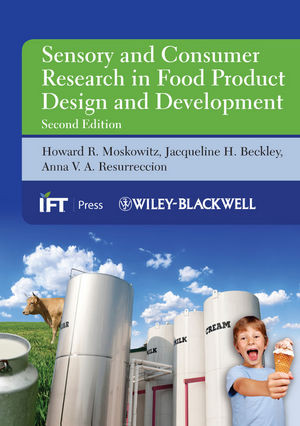

Most ebook files are in PDF format, so you can easily read them using various software such as Foxit Reader or directly on the Google Chrome browser.
Some ebook files are released by publishers in other formats such as .awz, .mobi, .epub, .fb2, etc. You may need to install specific software to read these formats on mobile/PC, such as Calibre.
Please read the tutorial at this link: https://ebookbell.com/faq
We offer FREE conversion to the popular formats you request; however, this may take some time. Therefore, right after payment, please email us, and we will try to provide the service as quickly as possible.
For some exceptional file formats or broken links (if any), please refrain from opening any disputes. Instead, email us first, and we will try to assist within a maximum of 6 hours.
EbookBell Team

4.7
86 reviewsThis popular volume, now in an updated and expanded second edition, presents a unique perspective afforded by the author team of Moskowitz, Beckley, and Resurreccion: three leading practitioners in the field who each possess both academic and business acumen. Newcomers to the field will be introduced to systematic experimentation at the very early stages, to newly emerging methods for data acquisition/knowledge development, and to points of view employed by successful food and beverage companies. The advanced reader will find new ideas, backed up by illustrative case histories, to provide another perspective on commonly encountered problems and their practical solutions.
This book is aimed at professionals in all sectors of the food and beverage industry. Sensory and Consumer Research in Food Product Design and Development is especially important for those business and research professionals involved in the early stages of product development, where business opportunity is often the greatest.Content:
Chapter 1 Emerging Corporate Knowledge Needs: How and Where does Sensory Fit? (pages 1–15):
Chapter 2 Making Use of Existing Knowledge and Increasing its Business Value—The Forgotten Productivity Tool (pages 17–40):
Chapter 3 Understanding Consumers' and Customers' Needs—The Growth Engine (pages 41–82):
Chapter 4 Innovation's Friend: Integrated Market and Sensory Input for Food Product Design and Development (pages 83–114):
Chapter 5 A Process to Bring Consumer Mind?Sets into a Corporation (pages 115–134):
Chapter 6 Developing Relevant Concepts (pages 135–166):
Chapter 7 High?Level Product Assessments (pages 167–205):
Chapter 8 So What Can Sensory do for me (Or for My Company)? (pages 207–227):
Chapter 9 What Types of Tests do Sensory Researchers do to Measure Sensory Response to the Product? and … Why do they do them? (pages 229–281):
Chapter 10 What can Sensory Researchers do to Characterize Products? and … How does One Select the Best Method? (pages 283–319):
Chapter 11 So What are the Practical Considerations in Actually Running a Test? What do I need to know? What does the Rest of the Company Need to Know? (pages 321–363):
Chapter 12 Evolving Sensory Research (pages 365–379):
Chapter 13 Addressable Minds™ and Directed Innovation: New Vistas for the Sensory Community (pages 381–407):